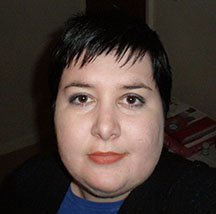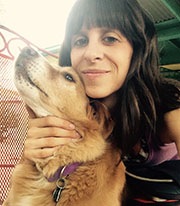
oming up with a great idea isn’t enough. As writers, we also have to find the right publication for it, and this is often easier said than done. And what if that publication turns us down?
How do we know that our idea was valid, but it just wasn’t a good fit? How do we come up with alternative publications? Do we give up at some point, or do we keep going?
Sometimes, we get lucky. The idea comes when we are reading our favorite blog or magazine. We already know what they like. We barely have to check the archives to ensure they didn’t run a similar piece recently. We pitch the editor. She loves it.
Except, that doesn’t always happen. The editor might have just received a similar pitch. The magazine might be changing direction, and that story idea no longer fits with the vision. Or the editor doesn’t fall in love with it as we expected.

“I usually don’t have a backup plan, but some writers have a list. Start at the top.”
(Photo: Olga Mecking)
Finding Other Right Markets
After we get over the disappointment, we have a decision to make. Do we keep pitching the idea? The answer is often yes. If we didn’t love it, we wouldn’t risk exposing it to our favorite editors. So now what?
My knee-jerk reaction is to go over in my mind similar publications that may accept this idea. I write down a list and head over to their websites to check their guidelines and previous issues. If my idea is fresh, I look for the name and email address of the right editor and pitch away. For most online publications, I give it two weeks to hear from the editor unless otherwise stated. I make sure to note down in my query tracker, which I store in Google Docs, what I pitched where and when.
If I can’t think of alternatives, I ask a few writer friends, especially if the idea is timely. Asking a friend to help me brainstorm can save time. Over the years, I’ve collected a comprehensive list of markets. But because the list is comprehensive, it’s easy to get lost in the possibilities—the various markets also remind me about other ideas I have, which make me think about my online bookmarks, and I start clicking on links... And you know what happens next? A few hours, if not days, have passed, and I still haven’t pitched that original idea. So first, I ask a friend for help.
I’m in several writing groups on Facebook. But before I head to any group, I ask my trusted friend Olga Mecking. She has bylines in Teen Vogue, Yes!, O, Ozy, BBC Travel and more.
“I just have a few ideas in my head at all times,” Olga says. “And sometimes I read a pub and think, this would fit.” If the original choices don’t work out, she waits a week or however long it takes to decide on the right home.
“I usually don’t have a backup plan,” she adds. “But some writers have a list. Start at the top.”
I agree there is no reason to sell yourself short. Begin with the best-paying, most-popular publications and work your way down if you aren’t accepted by your top choice.

“My usual practice is to send out rejected essays and pitches to my next choice within two hours to keep from letting doubt creep in.”
(Photo: Pauline Campos)
For accomplished writer Pauline Campos, who has written for Men’s Health, TIME, Huffington Post, and Redbook, the process is “a lot of organized chaos.”
“With essays, I usually write first and figure out where to send after. I start with the outlets featuring essays that I read; and if my piece isn’t a match, I ask my writing colleagues who might be interested in a swap for reading and a where to pitch list. The second one [help from colleagues] has worked many times over for me, especially because my ADHD means I tend to stick to pitching the same editors and outlets. Fresh eyes mean a new perspective. I always pitch ideas first for reported features. There’s just too much work involved in finding sources and arranging interviews to do the work first. For these, I find my pubs through networking with other reporters, cold-emailing editors for sites I want to write for, and basic internet research.
“As for backup ideas if, when my first choice says no? There’s always more than one option. My usual practice is to send out rejected essays and pitches to my next choice within two hours to keep from letting doubt creep in. Imposter syndrome is real.”

“If you’re still unable to find a good home for your article, consider narrowing the idea down further or slanting it so that it fits a different market.”
(Photo: Kristy Rice)
Successful writer and blogger Kristy Rice, who has been featured in WOW! Women On Writing, Funds for Writers, Be A Freelance Blogger, Barefoot Writer, and elephant journal searches “for other markets by subject/keyword or uses an all-inclusive resource.”
“If you’re still unable to find a good home for your article, consider narrowing the idea down further or slanting it so that it fits a different market. This is especially common when you resell previously published pieces to regional reprint markets and have to slant it to a specific area. For example, if your article idea was to write a heavily researched nutritional piece on the benefits of eating chia seeds, you could, either in addition or instead, market that idea to fitness/wellness sites as ‘10 Reasons You Should Be Adding Chia Seeds To Your Morning Smoothie.’ This can also help you land multiple assignments from one round of research.”
If you can’t find a home for your idea, then there is the option of providing content for your blog. If you had a terrific pitch to Cosmopolitan, but they turned it down, that may be content worth sharing with the world. If you think you have pitched enough (and still didn’t get a yes), you might consider writing the piece for your own blog. While writing for yourself might not pay directly, it becomes a part of your portfolio, and your portfolio always needs fresh, well-crafted content to attract clients and editors.
How Long Should You Keep Pitching?
If your idea is evergreen or not necessarily time-senstitive, then you can continue pitching as long as you are passionate about it. For example, I have an idea I’ve been pitching for the last two years. It is a personal essay, and the slant is as relevant as ever. So while it might one day end up in a memoir or a blog post, I still have outlets I want to try. One blog almost bought it, but we couldn’t make the payment method work as I’m an international writer.

“A pitch about writing for nothing (or not) was picked up by the British literary magazine Mslexia a year and eleven months after I originally pitched them, which is my record so far!”
(Photo: Diane Shipley)
Getting caught in the waiting purgatory is all too real for most writers. Diane Shipley has been writing part-time for twelve years, and once she got a response from an editor after nearly two years!
“A pitch about writing for nothing (or not) was picked up by the British literary magazine Mslexia a year and eleven months after I originally pitched them, which is my record so far! I think they literally pulled it out of the filing cabinet. As for the ones I repeatedly pitched, I was sure a piece about the rise in amateur advice online would be a match for The Guardian or Psychology Today, but it ended up at UK magazine Healthy after about twenty pitches—each one pretty similar but tweaked to be in the style of the publication. I was determined that it was a good idea, despite mostly being ignored until that last pitch!”
She is living proof that persistence pays off with bylines in The Washinton Post, The Guardian, and The Rumpus.

“Sometimes rejection means that I don’t have the story quite right yet, even though I think I do.”
(Photo: Debbie Weingarten)
Debbie Weingarten is more living proof. Debbie’s harrowing and engrossing The Guardian feature on farmer suicides, “Why are America’s farmers killing themselves in record numbers?”, boasts of over 96,000 shares and 200 comments. And yet, it took nearly five years to place. She’s been writing ever since she can remember, but she was a farmer when she got the idea, struggling with depression and anxiety.
“I had a really hard time finding affordable counseling resources or a therapist who understood the realities and unique stressors of a farm. That was when I first placed a call to Dr Rosmann (featured in the article), an Iowa farmer and psychologist, who works to connect farm people with behavioral health resources.
“About a year after I called Dr Rosmann, I left the farm and I got divorced, and I began a career as a freelance writer. And I found that I just couldn’t put down the story. I am active on local food boards and commissions here in southern Arizona, and I kept feeling like farmers and their well-being were being left out of the conversation.”
And even though the slant of her story didn’t change massively, the time helped her grasp her story better.
“My initial research, interviewing, and writing around this issue began in 2013, when I was still farming. It took nearly five years to fully understand the story, build trust with my sources, and finally get it published.”
Debbie tries to repitch her articles almost as soon as they are rejected, unless she feels she should rework the pitch.
“If the same story has gotten rejected repeatedly, I might take a break from it and try to find a different angle or way in. Sometimes rejection means that I don’t have the story quite right yet, even though I think I do.”
Debbie’s bylines include Vela, Guernica, and Edible Baja Arizona.

“Be prepared to make tweaks in your pitch or your story angle. And don’t give up.”
(Photo: Pinar Tarhan)
In a world where everything feels like it has been said and done before, it is exciting to come up with an idea that feels fresh and worth pursuing. An even better feeling is to know where that piece belongs. But editors won’t always agree with us, and that is okay. One of the necessary evils of a writing career is rejection. As brilliant as your idea might be, you will often get rejected. Be prepared to make tweaks in your pitch or your story angle. And don’t give up. Which reminds me: I better go and repitch that article of mine that I was inspired about two years ago.
*
Pinar’s Real-Life Example of Not Giving Up On an Idea Close to Your Heart
I landed my personal essay assignment about my journey with OCD, “The Trauma of Not Being Traumatized Enough,” after eight to ten pitches. It was published by OC87 Recovery Diaries in January 2018. I started pitching the essay in early 2016.
As a writer, you always have more than one idea you’re pitching, writing, and following up on, and it is easy to get discouraged or distracted after the first few rejections on one idea. But I was confident about my essay topic because it wasn’t just about my personal experience. I wanted to challenge some widely-held misconceptions about OCD, misconceptions that made my experience a lot harder than it could have been.
I have Pure O, meaning I have more obsessive thoughts than compulsions, which is when people do a certain activity an exact number of times every time. It is almost impossible to tell my diagnosis by just observing me. I’m nothing like Monk or Monica from Friends or Jack Nicholson’s character from As Good As It Gets. Because my kind of OCD wasn’t portrayed in the media, and because most mental health sufferers are shown to have traumatic pasts, it didn’t register with me that I could be suffering from it. It was a devastating experience, especially the first few months. So I had faith in the freshness and importance of my essay.
As I got rejected, I brainstormed with Olga (Mecking) about where I could pitch as well as checking my own market lists.
I think I first heard about OC87 Recovery Diaries via Susan Maccarelli’s Beyond Your Blog. The editor, Gabriel Nathan, was lovely to work with and pushed me just enough to tell the story in the best (and most honest and vulnerable) way possible. You never know which editor will feel the same way about an idea. You just need to put yourself out there. Later, Gabriel even connected me with Gabe Howard, and I was interviewed by him for The Psych Central show podcast.
Also, OC87 Recovery Diaries really believes in getting their authors paid for their work. So I got therapeutic release, publicity, money, and a wonderful byline I’ve already added to my Contently portfolio.
And this is why you should never give up on an idea close to your heart.
Pinar Tarhan is a freelance writer, blogger, and screenwriter for hire. She believes in fun, variety and big dreams, and she helps fellow writers with all three through her blog Addicted to Writing.
-----
Enjoyed this article? Check out these related articles on WOW!:
Revision, Rework, Rewrite: How toyou're your Work Back Out When Your Target Editor Says No
Recovering from Injury: Bouncing Back from a Rejection
How to Manage the Evil Three: Rejection, Depression, and Procrastination
Danica Davidson: From Rejection to 17 Book Contracts (and counting)